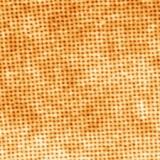
Current methods of microprocessor fabrication are limited by physics. Photolithography, the method used to make the tiny features on microprocessors, cannot create structures smaller than the wavelength of light. However, structures smaller than this size are necessary in order to continue shrinking the size of microprocessors and, thus, increase their speed and efficiency. A new method to create nanoscale features for microprocessor fabrication has been developed by researchers at the University of California at Santa Barbara using what they call block copolymer lithography (BCP) as reported in Science. This new method is a bottom-up approach, and unlike the top-down approach of photolithography, is not limited by the wavelength of light.
Block copolymers, the molecules at the heart of the new process, consist of two dissimilar blocks that have been chemically attached. Due to their dissimilar nature, the two blocks want to separate like oil and water separate, however, since the two blocks are chemically linked they cannot separate entirely from each other. Thus they separate at the nanoscale, typically in a honeycomb pattern. The novelty of this new research is a special combination of two types of block copolymers that results in a square rather than honeycomb pattern, as shown in the image. The square pattern is much more amenable to current industrial methods which use parallel lines and grids with square angles.
The research was partially funded by leading manufacturers of microprocessors, including IBM and Intel, as well as the National Science Foundation and others. The researchers indicate that their method was designed to be easily integrated into current manufacturing processes, making it a very cost-effective improvement to implement. The new method may be used in the fabrication of circuits as soon as 2011.
Tang, C., Lennon, E.M., Fredrickson, G.H., Kramer, E.J., Hawker, C.J., “Evolution of Block Copolymer Lithography to Highly Ordered Square Arrays” Science 2008, DOI: 10.1126/science.1162950.
Supporting information available here.
Other sources: zdnet, nanotechwire, UCSB
Image is reused with permission from Dr. Craig Hawker.
